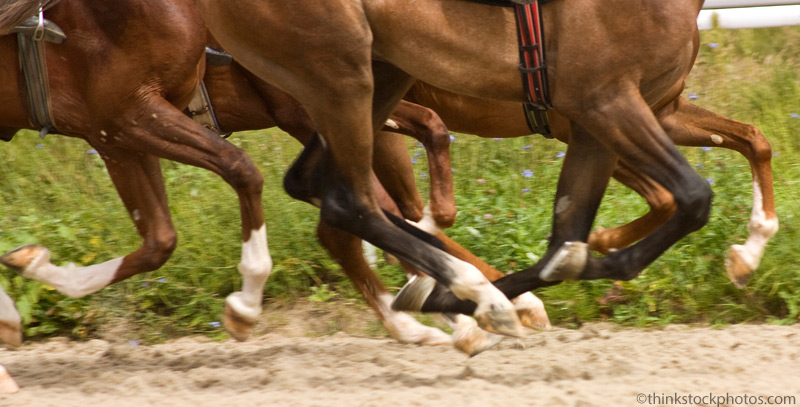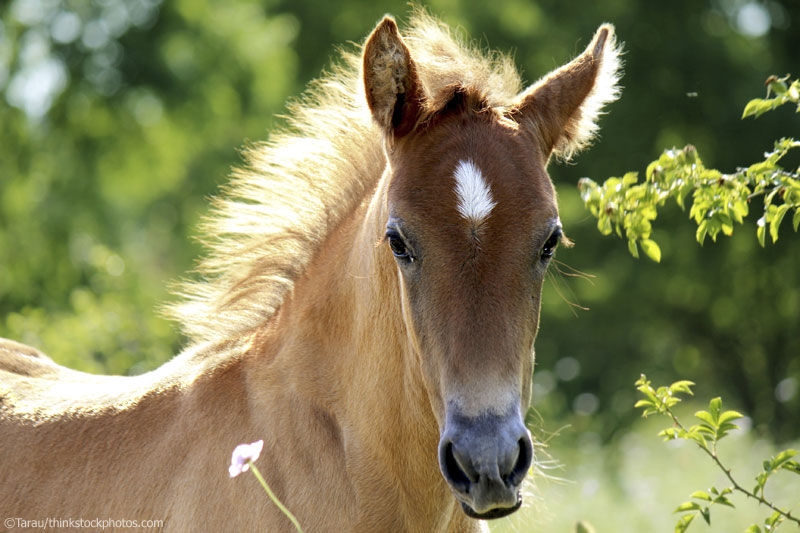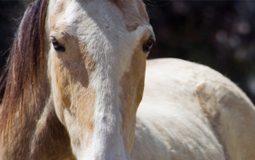There was a time in the not-so-distant past when a horse with a broken leg was considered a hopeless case. Today, thanks to major advancements in veterinary medicine, many horses with lower-limb fractures can be saved and go on to have normal, useful lives.

“Foals and young horses are more likely to have fractures involving the growth plates, or physes, as these are obviously prevalent in the young horse and somewhat exposed to trauma,” notes Earl Gaughan, DVM, DACVS, technical service veterinarian for Merck Animal Health.
In pasture situations, there may not be anyone around to witness what happened. The only sign there’s a problem is that the horse is lame when someone arrives to feed. A horse with a lower-limb fracture often appears “three-legged lame” (non-weight bearing), but not in every case.
“This is the rule, but there are exceptions,” says Gaughan. “Incomplete, non-displaced or hairline fractures can cause substantial lameness, but a horse may not be non-weight bearing. This is likely because the column of bone can structurally support careful weight bearing, but remains subject to decompensation (catastrophic fracture) due to typical flight behaviors in horses. If someone suspects a sudden onset of severe lameness, a veterinary exam should be obtained in an urgent fashion to see if a fracture has occurred.”
Upon discovery of the injured horse, proper first aid can make a huge difference. You’ll want to keep the horse quiet and ideally, not make him walk, until a veterinarian can arrive to determine the extent of the injury.
“The better a horse is managed after a fracture occurs, the better a potential surgical or other treatment choice has for final success in fracture healing,” Gaughan notes. “A horse should be moved as little as possible when discovered with a potential fracture. A veterinary exam should be sought as an emergency procedure. Appropriate, rigid support for fractures below the knees and hocks can often lead to better transport and, ultimately, better treatment and outcome.”
In addition to performing a physical exam, your veterinarian will usually take radiographs (x-rays) to detect whether or not there is a fracture. He/she may also use more sophisticated imaging techniques, such as a CT scan, which generates cross-sectional, or even three-dimensional, images.
Prognosis & Treatment
The location and function of the bone—plus, the complexity of the fracture itself—help determine the prognosis for recovery.
The ideal scenario is a simple, non-displaced fracture where accurate reconstruction of the joint is possible. With a complicated fracture where the bone is in many pieces, the horse may not be able to be saved, or may recover, but never be rideable. The prognosis decreases markedly with an “open” fracture, which is when the bone comes through the skin. Even if the fracture itself is simple, the odds of successful repair and recovery decrease with an open fracture because of the high chance of infection.
Gaughan explains that the likelihood for a good prognosis depends on each individual case.
“Simple fractures of the phalangeal bones (in the pasterns and hooves) will typically have a better prognosis for soundness and survival than fractures of the long bones of the upper limbs,” he adds.

A foal with a fracture can be disheartening, but the good news is that the success rate of treating fractures in foals is much higher than in adult horses. The weight of foals makes them more adaptable for different surgical techniques, and because they weigh so much less than an adult horse, there is less weight on the injured leg during healing. Because of their young age, they also heal much more quickly.
Stainless steel screws and plates are often used in fracture repair, when necessary. Depending on the scenario, these implants may be removed after the bone has healed, or can be left in place. Following surgery, it’s common for the horse to be on antibiotics to help prevent infection.
The amount of time required for healing depends on the individual horse and the type of fracture. An elbow fracture is often back and working in four to five months, and some cannon bone fractures can also heal this quickly. A complicated fracture may require stall rest and confinement for as long as a year.
“Any fracture can potentially heal,” says Gaughan. “As mentioned, fractures of the phalangeal bones carry a better prognosis for survival and soundness than fractures of the long bones of the upper limb. Also, fractures that involve small range of motion joints, such as the pastern, will do better than fractures that involve large range of motion joints, such as the fetlock and coffin joint.”
Prognosis also depends on how good—or bad—a patient the horse is during recovery, from the hours immediately following surgery through the weeks and months of confinement necessary for healing.
“Good restraint and a horse’s ability to tolerate the exercise restrictions required for bone healing will do better than horses that do not tolerate either,” Gaughan points out. “The final success of surgical fracture repair is often dictated by a horse’s behavior during anesthetic recovery and stall rest, rather than what happens in the operating room. Good surgical repair is essential, but often this good start depends on the horse once the surgery is completed.”
Liked this article? Here are others you’ll enjoy:
Horse Injury Rehabilitation
Preventing Fractures in Race Horses
Ask the Vet: Dealing with Old Injuries






My horse, Crimson, broke a small bone in the fetlock joint area, as a yearling. She was in a homemade cast from Sept, until April.
good info
Good article.
A horsse lovers worst nightmare…but the article makes it sound like fractures are common.
My mare plays hard in turnout-scares me sometimes.
My 6 year old ottb sustained a green line fracture of the tibia 6 weeks ago. The vet came and did x-rays. He has been on stall rest and is now being hand walked 5 min a day. If we can keep him quiet the prognosis is good. Fingers crossed that he will continue to heal and cooperate with us.
Good to keep in mind.